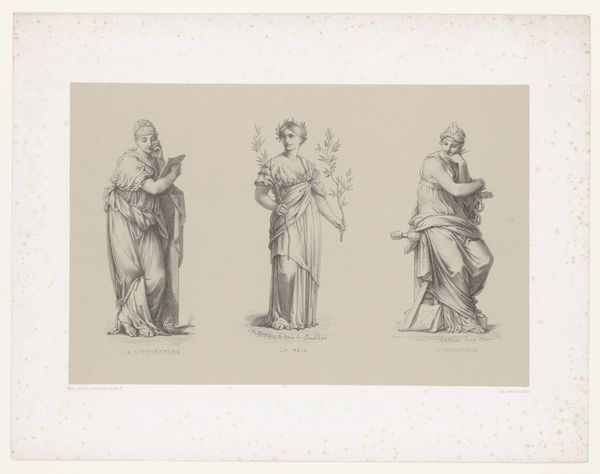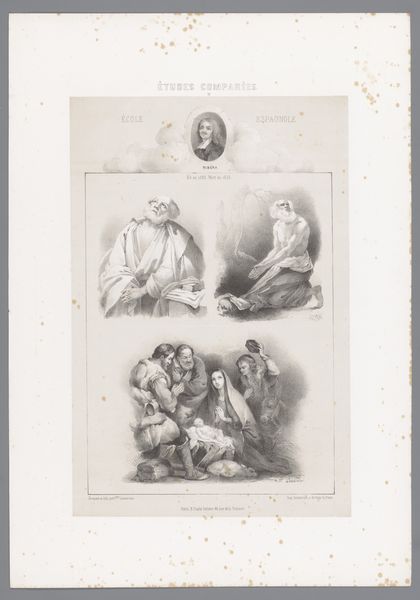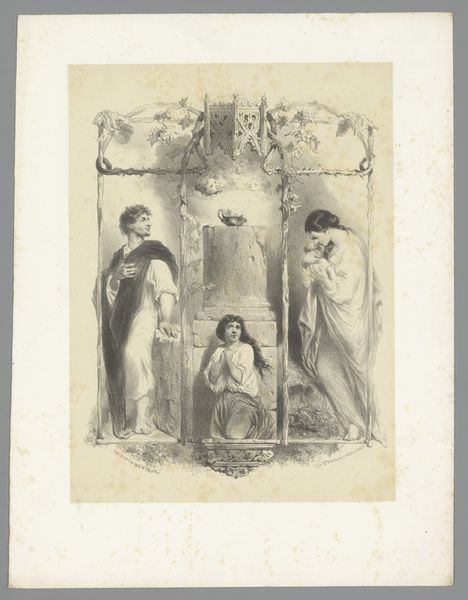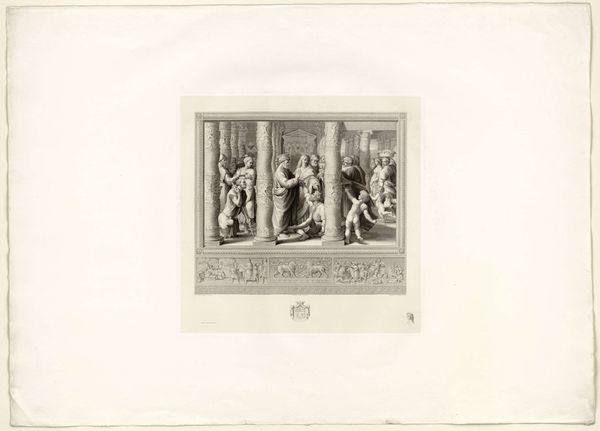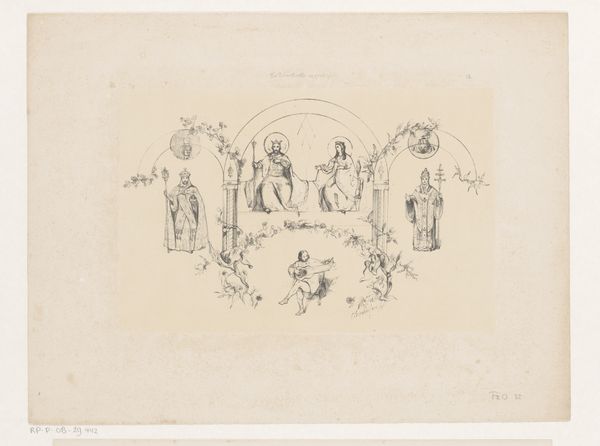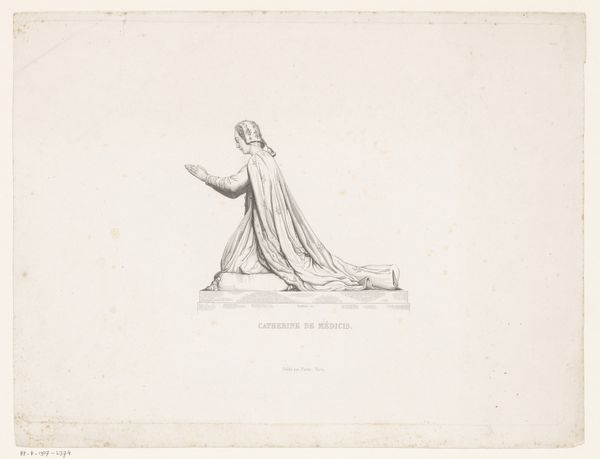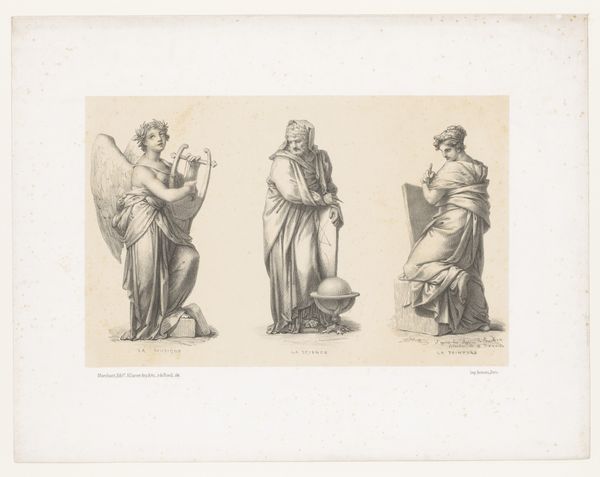
Dimensions: height 433 mm, width 594 mm
Copyright: Rijks Museum: Open Domain
Curator: What a poignant piece. It has an air of serenity tinged with a certain somberness. The grayscale palette lends a classic, almost timeless feel. Editor: Indeed. This is "Drie voorstellingen van Maria met het Christuskind," or "Three Depictions of Mary with the Christ Child." It’s an engraving by Carl Straub from the 1850s, reflecting a distinct Romanticist aesthetic in its treatment of the religious theme. Let's consider its social implications, given that depictions of motherhood often idealize specific versions of femininity and domesticity. Curator: I'm intrigued by that very framing. The Virgin Mary, idealized as mother, but also a woman caught between her humanity and an impossible expectation of divinity. And notice how each panel stages a different version of that dynamic? One seemingly earthly, the central one ethereal, and the final enclosed with implied spectators? Editor: Precisely. Placing it within the context of the 19th century, we must account for the rising tide of religious art commissioned and distributed by religious institutions aiming to cement social control and enforce adherence to strict familial structures and moral conduct. What could the political implication of the idealization of motherhood be, given its historical contingency? Curator: And to what extent do those representations echo or actively work to negate realities of lived experience of being women, particularly within social classes or those situated outside hegemonic culture? How might we actively center those unspoken stories into our understanding of a piece that might initially register as conventional and safe? Editor: Right. The very act of visually packaging the image of motherhood warrants scrutiny of whose values and interests these representations are truly intended to serve. The visual politics operating through idealized imagery serves a persuasive purpose that warrants serious attention, right? Curator: Absolutely, while from a distance it feels so safely sentimental, a deep analysis really unravels its layers of political intentions and lived implications of the female figures presented here, Madonna and Child. Editor: Thanks for diving in, it's vital to remember art isn't just aesthetically experienced; it is actively shaping culture as much as it reflects it, I learned a lot in this quick deep dive. Curator: Absolutely, a great reminder of our duty to really tease out all of art’s possibilities and cultural ripples.
Comments
No comments
Be the first to comment and join the conversation on the ultimate creative platform.
